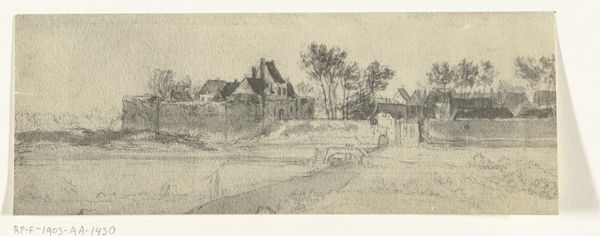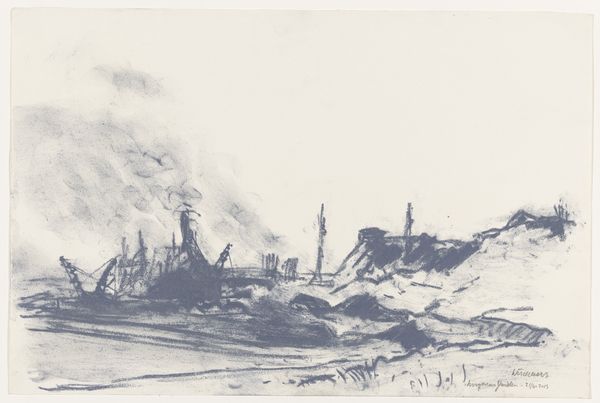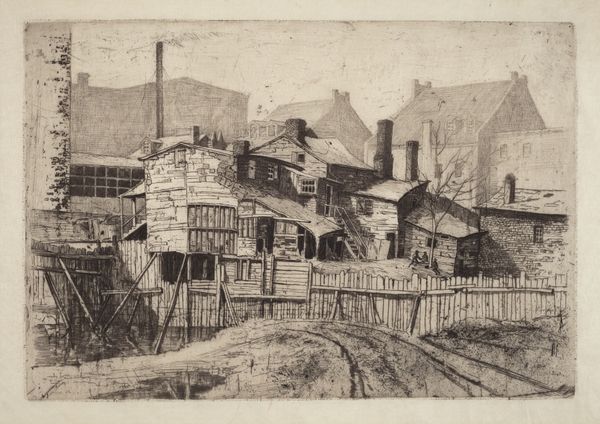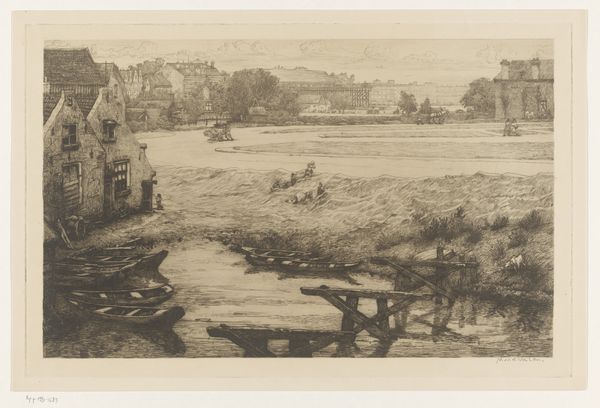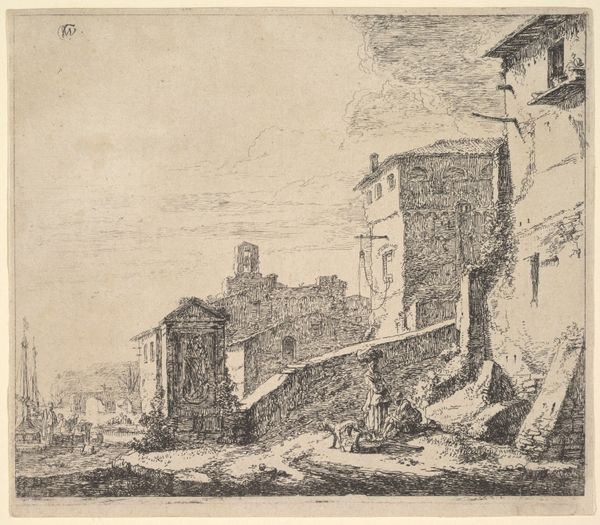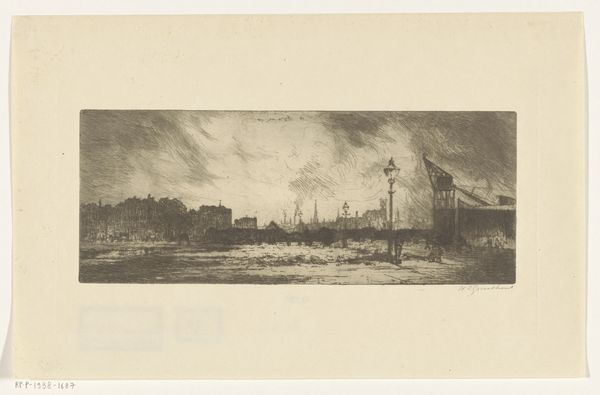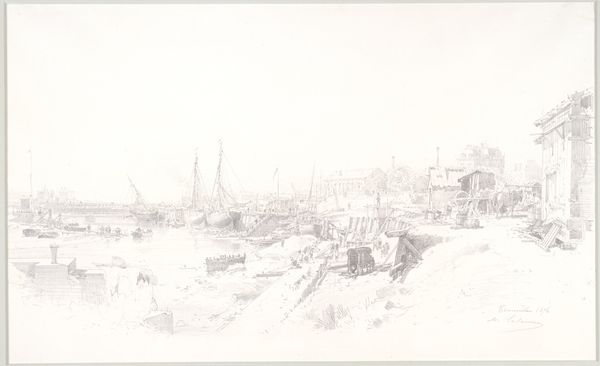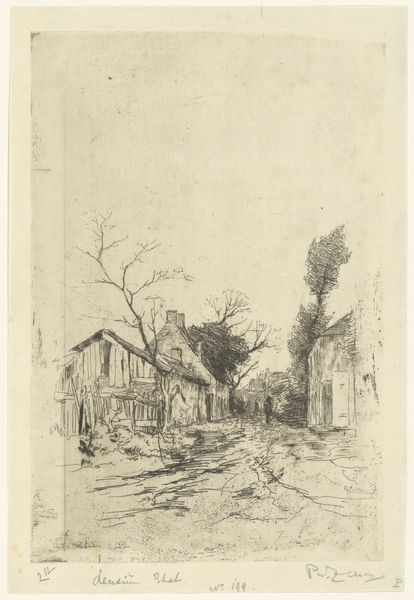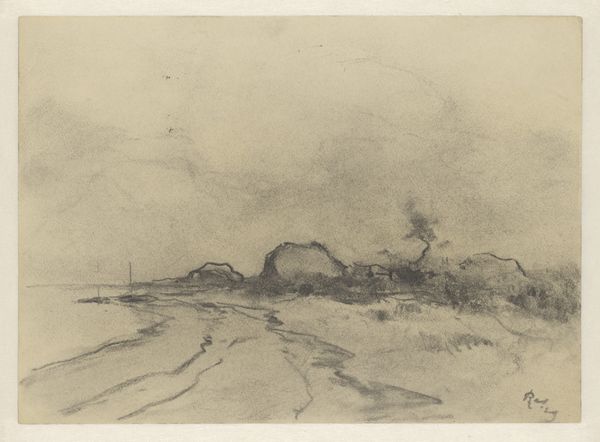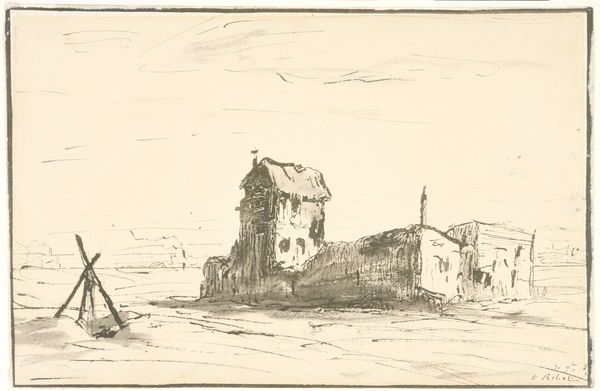
drawing, paper, pencil
#
drawing
#
pen sketch
#
landscape
#
paper
#
pencil
#
expressionism
Copyright: Städel Museum, Frankfurt am Main
Curator: This harrowing sketch is titled "Verbrannte Erde in Russisch-Polen," or "Scorched Earth in Russian Poland," made by Reinhard Pfaehler von Othegraven in 1915. The work on paper, made with pencil and pen, offers a window into the devastation of World War I's Eastern Front. Editor: My initial reaction is one of intense desolation. The somber, almost monochromatic palette reinforces the idea of ruin, while the angular, jagged lines suggest a landscape brutally reshaped by conflict. The lack of any sign of life feels especially poignant. Curator: Precisely. It embodies the war’s impact on both landscape and psyche. It was drawn in the first year that Germany's scorched earth tactics directly affected populations within Eastern Europe. Consider this alongside the burgeoning modernist angst felt throughout intellectual circles: a sense of humanity being sacrificed on the altar of progress. The visual language really reflects that sense of utter futility and societal trauma. Editor: The recurring motif of the broken buildings, then, really emphasizes that rupture. These are not just generic buildings; their skeletal forms evoke an absent civilization, a haunting reminder of past security and order. I also think of ruins symbolizing cycles of destruction and renewal; their repetitive presence speaks volumes about humanity's cyclical patterns. Curator: Absolutely, it visualizes that precise sense of disruption that becomes emblematic of interwar art across Europe, even as definitions of "progress" shift and fragment depending on national interest and other sociopolitical forces like class, religion, gender. The blasted structures remind us how vulnerable populations were as Germany attempted to expand, with those in Polish territories finding themselves directly between battling armies. Editor: The overall composition invites the eye to travel over this obliterated world, a gesture perhaps meant to prompt deeper introspection on our role in cycles of such devastation. Even as the artwork encapsulates a specific historical moment, its resonance persists as an enduring warning, urging dialogue regarding power, conflict, and displacement. Curator: Agreed, thinking about that, considering ongoing contemporary implications surrounding current conflicts – the questions this piece raises only grow more important. Editor: Very true; reflecting on its symbols and social implications encourages self-reflection, challenging viewers to assess their own engagement in cultural memories.
Comments
No comments
Be the first to comment and join the conversation on the ultimate creative platform.

